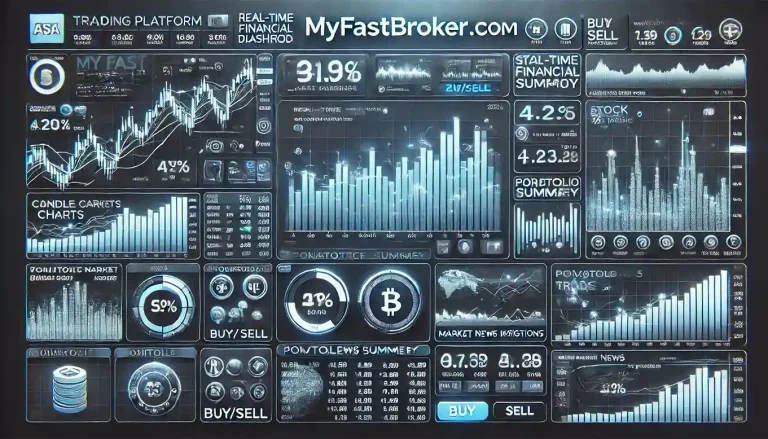Wepbound vs. Traditional Web Tools: Which One Should You Choose?

Introduction
The web development landscape has come a long way. Once dominated by manual coding and complex software, it now offers modern platforms that simplify the process for everyone—from beginners to expert developers. But with so many options, one crucial question arises:
Is Wepbound the future of web development, or are traditional tools still unbeatable?
As the industry evolves, choosing the right tool can make or break a project. In this deep dive, we’ll compare Wepbound with traditional web tools, analyzing their strengths, limitations, and ideal use cases. By the end, you’ll have a clear answer on which platform suits your needs best.
What is Wepbound? A Game-Changer or Just Another Tool?

In a world where website creation has become more accessible than ever, Wepbound emerges as a platform promising innovation. But does it truly redefine web development, or is it just another name in an already crowded market?
The Vision Behind Wepbound
Wepbound is designed to bridge the gap between simplicity and functionality. Unlike traditional development tools that require deep coding expertise, Wepbound prioritizes accessibility without compromising performance. Its mission is clear: Empower individuals and businesses to build high-quality websites effortlessly.
What Sets Wepbound Apart?
Several features make Wepbound stand out:
- Visual-First Approach: The platform eliminates the need for coding, offering a smooth drag-and-drop experience.
- Built-in Optimization: From mobile responsiveness to SEO, Wepbound ensures every website is performance-ready.
- Real-Time Collaboration: Teams can work on projects simultaneously, a feature rarely found in traditional platforms.
- Security Without Complexity: Automated security updates keep sites protected without user intervention.
The Technology Powering Wepbound

Wepbound isn’t just about convenience; its infrastructure is built for scalability and security. It leverages:
- Modern Front-End Frameworks: Likely built on React, Vue.js, or similar for seamless UI/UX.
- Cloud-Based Hosting & CDN: Ensures fast loading speeds and global accessibility.
- Integrated Security Measures: Automated SSL, firewalls, and malware detection for hassle-free protection.
By blending simplicity with powerful features, Wepbound challenges the traditional development model. But is it enough to replace the giants of the industry?
The Giants of the Industry: Traditional Web Tools in Perspective
For decades, professionals have relied on traditional web development tools. From content management systems (CMS) to advanced coding frameworks, these tools remain essential in building dynamic, scalable websites.
The Most Widely Used Traditional Web Tools
- Content Management Systems (CMS): WordPress, Joomla, and Drupal dominate this space, allowing users to manage websites without extensive coding.
- Coding Platforms: Developers rely on tools like Visual Studio Code, Sublime Text, and Atom for writing and debugging code.
- Front-End & Back-End Frameworks: React, Angular, Laravel, and Django provide structured development environments.
Why Professionals Still Rely on Traditional Tools
Despite the rise of modern platforms, traditional tools continue to thrive due to:
- Unlimited Customization: Direct access to code allows developers to craft unique, highly functional websites.
- Scalability: Traditional frameworks offer better control over large-scale projects.
- Long-Term Reliability: Open-source platforms like WordPress provide vast plugin ecosystems and community support.
Comparing the Key Players
| Feature | WordPress (CMS) | Joomla (CMS) | Custom-Coded Websites | Wepbound |
| Ease of Use | Moderate | Steep Learning Curve | Requires Expertise | Extremely Easy |
| Customization | High | Very High | Unlimited | Moderate |
| Performance Control | Requires Optimization | Better Control | Fully Customizable | Pre-Optimized |
| Security Management | User-Managed | User-Managed | Developer-Managed | Automated |
Traditional web tools remain the backbone of high-end development, but Wepbound is carving out a space for those who prioritize efficiency and accessibility.
The Face-Off: Wepbound vs. Traditional Web Tools
a. User Experience & Accessibility – The Simplicity Showdown
Imagine you’re stepping into the world of website creation. Would you rather have a friendly guide handing you all the tools on a silver platter or dive into a complex maze of codes and configurations?
Wepbound is your easy-to-use, no-code/low-code wizard, letting you build stunning websites with a simple drag-and-drop interface—no coding spells required! Whether you’re a budding entrepreneur or a content creator, Wepbound ensures accessibility at every step.
Meanwhile, traditional web tools like WordPress, Joomla, and custom-coded platforms demand a deep dive into HTML, CSS, JavaScript, and database management. If you’re up for the challenge, these tools offer limitless possibilities—but they also come with a steep learning curve.
So, the choice is yours:
- Want to build a site with zero coding experience? Wepbound is your best bet.
- Crave absolute control and customization? Traditional tools are your playground.
b. Customization & Scalability – Creativity vs. Control
When it comes to crafting a website, are you looking for a ready-made canvas or a completely blank slate?
Wepbound offers a treasure trove of pre-built templates, making it a dream for those who want a sleek design without the hassle of building from scratch. It’s quick, effortless, and visually appealing. But here’s the catch—predefined elements can sometimes limit full creative freedom.
Traditional web tools, however, are a playground for developers. You can tweak every detail, write custom scripts, and add advanced functionalities that fit your brand like a glove. This makes them ideal for businesses with growing needs, but it also means more time and technical expertise.
So, what’s your pick?
- If speed and ease are your priorities, Wepbound has your back.
- If scalability and uniqueness are key, traditional tools offer boundless possibilities.
c. Performance & Optimization – Speed vs. Control
Speed matters—nobody likes a slow website. But who handles optimization better?
With Wepbound, performance is automated. Caching, image compression, and server-side optimizations work behind the scenes, ensuring smooth user experiences without you lifting a finger.
Traditional tools put the power in your hands, but that also means you need to manually tweak performance settings. If done right, you can push optimization to the next level, but if ignored, your site may suffer from sluggish speeds.
The verdict?
- Need instant performance boosts with minimal effort? Wepbound is your go-to.
- Want complete control over optimization? Traditional tools let you fine-tune every detail.
d. Security & Data Protection – Automated Shield vs. Manual Defense
Cyber threats lurk in every corner of the internet. The question is—who’s got your back?
Wepbound acts like an automated security guard, handling patches, updates, and threat detection in real time, so you don’t have to worry about vulnerabilities.
With traditional tools, security is in your hands. You’ll need to update plugins, install security patches, and manage backups manually. While this offers flexibility, it also increases the risk of human error or outdated security protocols.
Who wins here?
- If you want hassle-free security, Wepbound is your best bet.
- If you prefer to control every security detail, traditional tools offer deeper customization.
e. Collaboration & Workflow Efficiency – Team-Friendly vs. Developer-Focused
Working with a team? Then your web tool should support seamless collaboration!
Wepbound is built for teamwork, enabling real-time collaboration among designers, marketers, and developers—all within the same interface. No more back-and-forth file sharing or conflicting edits.
Traditional web tools require external integrations like GitHub (for version control) or project management tools like Trello or Asana. While these tools enhance workflow, they also add extra layers of complexity.
Best for you?
- Wepbound is perfect for agencies, freelancers, and non-tech teams needing a smooth workflow.
- Traditional tools suit structured development teams that prefer version control systems.
f. Cost Analysis: What’s More Budget-Friendly?
Let’s talk numbers—because budgets matter!
With Wepbound, you get an all-in-one subscription covering hosting, security, and maintenance. It’s predictable and cost-effective for startups or small businesses.
Traditional tools may seem budget-friendly at first (with free CMS options), but hidden costs lurk beneath—hosting fees, premium themes, plugins, and development expenses can quickly add up.
What fits your budget?
- If you want a simple, all-in-one pricing model, Wepbound saves you time and money.
- If you have the budget for a fully customizable experience, traditional tools offer long-term flexibility.
Real-World Applications: Where Each Tool Excels
So, who wins the battle between Wepbound and traditional web tools? Well, it depends on who’s wielding the sword. Let’s break it down.
Who Should Use Wepbound? (Startups, Bloggers, Quick Project Launches)
Imagine this—you have a brilliant business idea, a blog waiting to go live, or a client expecting a website yesterday. Wepbound is your secret weapon. With its drag-and-drop simplicity, ready-to-go templates, and built-in security, you can launch a fully functional website without touching a single line of code.
Ideal for:
- Startups looking to establish an online presence fast
- Bloggers who want a sleek, professional website without tech headaches
- Small businesses that prefer a hassle-free, cost-effective solution
- Freelancers juggling multiple projects with tight deadlines
Who Should Stick with Traditional Tools? (Large Enterprises, Developers, Agencies)
On the flip side, if your vision is bigger than templates and you need complete creative freedom, traditional web tools remain the gold standard. Whether it’s a multinational company needing a fully customized website or a developer looking to push the limits of design and functionality, traditional tools allow absolute control.
Best suited for:
- Large enterprises that require high-performance, scalable websites
- Developers who need full control over design, functionality, and backend code
- Agencies managing multiple complex client projects with diverse needs
- E-commerce giants handling thousands of transactions and users daily
Success Stories: Brands & Individuals Thriving with Each Platform
Wepbound’s Rise: Speed Meets Simplicity
Meet Lena Parker, a lifestyle blogger who skyrocketed her brand visibility using Wepbound. With zero coding experience, she built a sleek, responsive blog in just three days! Her engagement rates increased by 45%, and her monthly visitors grew from 5K to 20K within six months.
Similarly, Startup Spark, a digital marketing agency, leveraged Wepbound to create five client websites in a month, reducing project timelines by 60% and cutting development costs by 40%.
Traditional Tools Powering Industry Giants:
Look at Amazon, Apple, and Netflix. These brands need high-performance, custom-built platforms capable of handling millions of users at once. Their websites are finely tuned machines, optimized for speed, security, and personalization—something Wepbound (at least for now) cannot offer.
Wepbound vs. Traditional Tools
Following bar chart makes it easier to see how Wepbound excels in startup adoption, speed, and affordability, while traditional tools dominate in scalability and customization:
Key Metrics Comparison
| Metric | Wepbound | Traditional Tools |
| Preferred by startups | 72% | 28% |
| Deployment Speed | 3-5x faster | Slower, requires coding |
| Cost-Effectiveness | 40% cheaper | Higher due to custom development |
| Scalability for Large Businesses | Moderate | High |
| Customization Flexibility | Limited | Unlimited |
The Future of Web Development: Who Will Reign Supreme?
Is Wepbound the future? Or will traditional tools continue to dominate? The answer isn’t black and white—it’s a blend of both worlds.
Will Wepbound Replace Traditional Tools, or Will They Coexist?
Instead of a winner-takes-all scenario, experts predict coexistence. Wepbound is democratizing web development, making it accessible to everyone, while traditional tools continue to serve those who need full control.
Think of it like this:
- Wepbound is like Canva—quick, effective, and user-friendly.
- Traditional tools are like Photoshop—powerful, customizable, and limitless.
Trends Shaping the Future
- AI-Driven Website Builders – Imagine a world where you describe your website, and AI builds it for you in seconds. This is already happening! Platforms like Wix’s AI Website Builder are just the beginning.
- Automation & Web3 – As blockchain technology grows, decentralized web solutions will emerge, changing how we think about online presence. Will Wepbound integrate Web3? Will traditional tools adapt? The game is changing.
- Hyper-Personalization – The next wave of web development is all about AI-driven custom user experiences. Websites will adapt to user behavior in real-time, making them more engaging than ever.
Predictions from Experts on the Evolution of Web Development
“Low-code and AI-powered tools will dominate small to mid-sized businesses, while enterprises will continue to rely on custom-built solutions.” – TechCrunch
“The future is hybrid—no-code tools will enhance traditional development rather than replace it.” – Forbes
“In 10 years, coding might not be a necessity for 80% of websites. AI will do the heavy lifting.” – Industry Expert Panel
Conclusion
Choosing between Wepbound and traditional web tools isn’t about which is better—it’s about which is right for your project. Here’s how to decide:
When to Choose Wepbound
- You need a website quickly and don’t want to code.
- You’re a startup, blogger, or freelancer looking for an easy-to-use solution.
- You prefer a drag-and-drop interface with minimal technical effort.
- You want an all-in-one platform with hosting, security, and updates handled for you.

When to Choose Traditional Tools
- You need full control over design, code, and backend functionality.
- You’re a developer, agency, or enterprise working on a complex, large-scale project.
- You want advanced customization, performance fine-tuning, and scalability.
- You’re comfortable managing hosting, security, and updates manually.
The Future of Web Development: A Hybrid Approach?
With AI-driven website builders and emerging Web3 technologies, the future will likely be a blend of both worlds. Many businesses use Wepbound for quick prototyping and traditional tools for deep customization.
So, which path fits your needs best? Let the showdown begin!
FAQ’s
Can Wepbound handle complex web applications?
Wepbound is designed for efficiency, offering seamless website building for businesses, bloggers, and startups. However, when it comes to complex applications requiring advanced database management, extensive backend logic, or intricate API integrations, traditional development provides unmatched flexibility.
Enterprises with high-performance requirements should opt for traditional coding solutions.
Is traditional coding becoming obsolete?
While no-code platforms like Wepbound are revolutionizing web development, traditional coding remains essential for advanced applications. Custom-built platforms, SaaS solutions, and enterprise-level websites still require full-stack development.
While no-code platforms like Wepbound are revolutionizing web development, traditional coding remains essential for advanced applications. Custom-built platforms, SaaS solutions, and enterprise-level websites still require full-stack development.
Which is better for SEO: Wepbound or traditional platforms?
SEO performance depends on multiple factors, including site speed, mobile responsiveness, and content structure. Wepbound offers built-in SEO optimizations such as clean URLs, metadata control, and automatic performance enhancements.
However, traditional platforms allow full customization of technical SEO elements, schema markup, and server configurations, giving them a competitive edge for high-ranking, content-heavy websites.
How does Wepbound compare to other no-code platforms like Wix or Webflow?
Wepbound provides a streamlined experience with an intuitive drag-and-drop builder, making it more accessible than Webflow and offering greater customization options than Wix.
Unlike other no-code solutions, Wepbound emphasizes rapid deployment while maintaining performance efficiency. However, Webflow caters to design-focused users, and Wix offers extensive templates, making each platform suitable for different user needs.
Can businesses scale their websites efficiently with Wepbound?
Wepbound supports business growth with automatic updates, hosting, and security management, making it a strong option for startups and SMBs.
However, large-scale businesses requiring deep system integrations, custom database structures, and unlimited scalability often benefit from traditional development, where they have full control over expansion strategies.
Wepbound excels in accessibility and speed, while traditional tools remain indispensable for robust, high-performance web solutions. Choosing the right platform depends on project complexity, long-term goals, and customization needs.






